14 Worst Lawn Weeds in Dallas, TX (and How to Get Rid of Them)
BY KIMBERLY MAGERL | JUNE 18TH, 2019 | DALLAS, LAWN CARE, TEXASWeeds are like stealthy ninjas, gaining control of your lawn and bringing it to the brink of destruction. Even when you think you are doing everything right, diligently applying your pre-emergent herbicide and swooping in immediately to pull weeds that pop up in your lush Dallas lawn, these pesky invaders multiply before your eyes. Luckily, we compiled a list of the most common lawn weeds in Dallas, including tips on how to get rid of them.
In this article, we will cover:
Weed Control Chemical Treatments
- Annual Bluegrass
- Bull Thistle
- Common Chickweed
- Crabgrass
- Creeping Charlie
- Dallisgrass
- Dandelion
- Hairy Bittercress
- Henbit
- Nutsedge
- Purslane
- Quackgrass
- Spotted Spurge
- White Clover
Why are Weeds Bad for Your Dallas Lawn?
Like a good con man, weeds love a weak spot. These lawn invaders signify an underlying problem with your lawn’s health. They love low-nitrogen soils, imbalanced pH, and thinning turf. Maintain a healthy lawn with routine maintenance, watering, and fertilization schedules, and the weeds won’t stand a chance.
Check out some reasons why weed control is so important:
- Weeds steal vital nutrients, water, and sunlight from your turfgrass and plants.
- They camouflage and spread pests and diseases.
- The longer you let weeds live rent-free in your yard, the harder they are to control.
Ways to Control Weeds in Your Dallas Lawn
There are two ways to control weeds in your lawn: chemical treatments and hand pulling. Pulling weeds by hand is the safest removal method, but it isn’t always the best. Be sure to identify the type of weed you are dealing with before selecting your removal method.
Hand Weeding
Experts agree, hand weeding is just as important as chemical removal methods. You should aim to weed your yard and garden weekly or bi-weekly. Here are some tips to keep in mind:
- Remove weeds while they are young before they have bloomed or developed complex root systems
- Be sure to remove the entire weed, including roots, rhizomes, tubers, or bulbs
- Use a screwdriver or dandelion fork to help remove weeds with a taproot, like dandelions or spotted spurge
Weed Control Chemical Treatments
- Pre-emergent herbicide: Kills seeds before germination, preventing weeds from popping up in your yard
- Post-emergent herbicide: Targets weeds you can see, disrupting growth and killing them
- Iron-based herbicide: Specifically targets broadleaf weeds
14 Worst Lawn Weeds in Dallas
1. Annual Bluegrass (Poa annua)
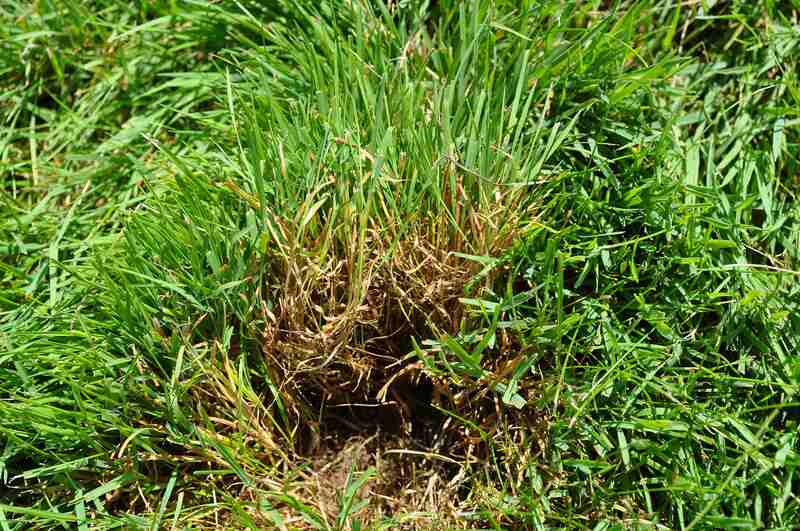
Photo Credit: NY State IPM Program at Cornell University / Wikimedia Commons / CC BY 2.0
Annual bluegrass, also known as Poa annua, is an annual grass that reproduces with creeping stolons. It appears in late summer and lasts through fall. It has a dense, clumping growth pattern with serrated, boat-shaped leaves.
Annual bluegrass grows rapidly, easily out-competing existing turfgrass. It is important to note this annual weed is adaptable and responds well to mowing, and it is used as turfgrass in commercial settings like golf courses.
Annual bluegrass is best controlled using a pre-emergent herbicide in the fall and responding to follow-up growth with a post-emergent herbicide.
Plant type: Annual grass
USDA hardiness zone: 4-8
Habitat: Prefers disturbed, cultivated soil
Danger: Non-toxic; no safety hazards
Removal method: Pre-emergent herbicide, post-emergent herbicide
2. Bull Thistle (Cirsium vulgare)
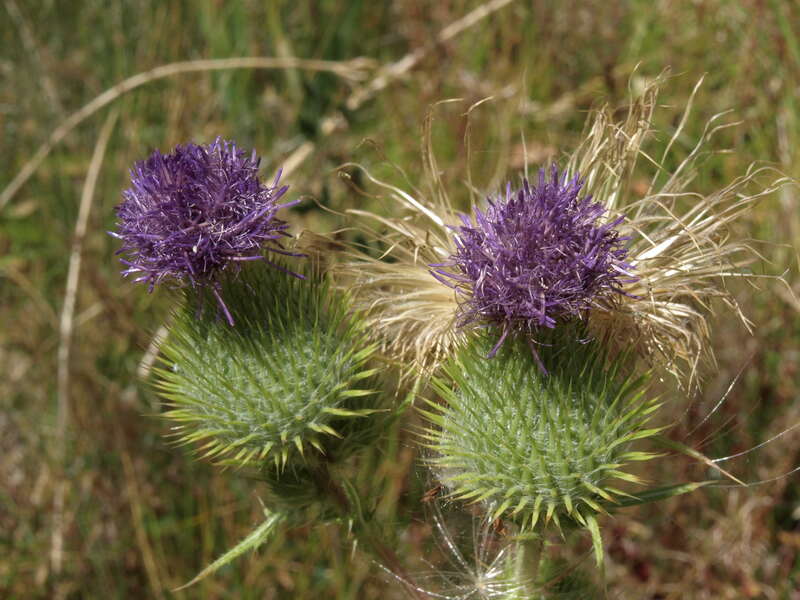
Photo Credit: Jim Morefield / Flickr / CC BY-SA 2.0
Known as Texas thistle in Dallas, bull thistle is a broadleaf biennial, meaning it takes two years to complete its life cycle when left undisturbed. It blooms dark-pink, prickly flowers, and puffy seed heads spread in the air for germination like dandelions.
Spray Texas thistle with post-emergent herbicide after it flowers, usually in early to late spring. Don’t worry if you have to come back and spray the pesky weed again. It can take several applications to get rid of the hardy biennial completely.
Plant type: Broadleaf biennial
USDA hardiness zone: 3-10
Habitat: Adaptable
Danger: Moderate; prickly flowers, mildly toxic to humans and livestock
Removal method: Post-emergent herbicide
3. Common Chickweed (Stellaria media)
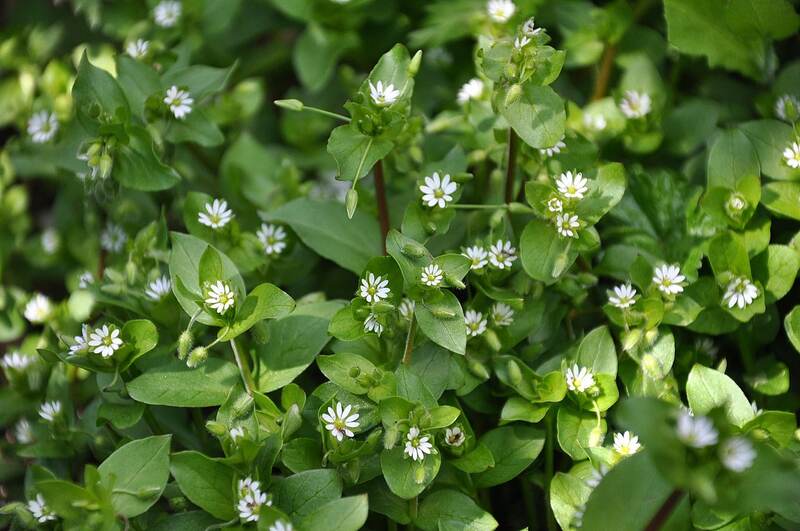
Photo Credit: Lazaregagnidze / Wikimedia Commons / CC BY-SA 4.0
Common chickweed appears during North Texas winters. Star-shaped white flowers bloom in low-growing mats of leaves. The broadleaf annual stands up to mowing well, making it difficult to get rid of.
It is an edible weed and is often fed to poultry. Chickweed thrives in moist, shaded areas. Removal methods include pulling the weed by hand, being sure you get the root system and spraying pre-emergent herbicide in early spring.
Plant type: Broadleaf annual
USDA hardiness zone: 4-11
Habitat: Moist, shady lawns and gardens, especially near buildings
Danger: Low; edible but large quantities cause stomach irritation in humans
Removal method: Pre-emergent herbicide, hand removal
4. Crabgrass (Digitaria)
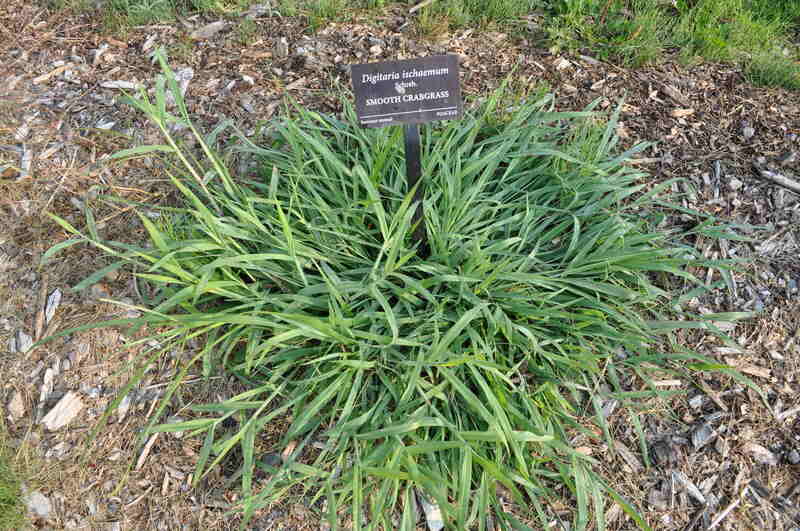
Photo Credit: NY State IPM Program at Cornell University / Flickr / CC BY 2.0
Crabgrass thrives in the Dallas summer. This annual grassy weed prefers dry soil. Its blades and leaf sheaths are covered by dense hairs that irritate the skin, and the high stalks steal valuable nutrients from your turfgrass.
It reproduces quickly and grows faster than your lawn. Crabgrass loves the sun and overtakes thin lawns. Think twice before cutting your grass extremely short to lessen your mowing frequency, as the fast-growing weed will overtake it quickly.
The best method to get rid of crabgrass is to use a pre-emergent herbicide and maintain a healthy and dense lawn with routine fertilization and a consistent watering schedule.
Plant type: Annual grass
USDA hardiness zone: 3-11
Habitat: Sparse, disturbed habitats like thin lawns, gardens, vacant lots, roads, and grass paths
Danger: None
Removal method: Pre-emergent herbicide, post-emergent herbicide, and routine lawn maintenance
5. Creeping Charlie (Glechoma hederacea)
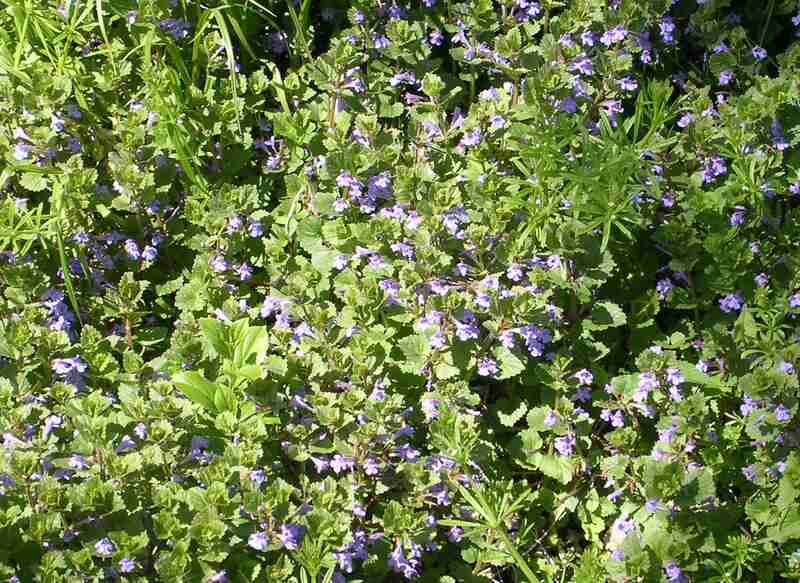
Photo Credit: Jay Sturner / Wikimedia Commons / CC BY 2.0
Creeping Charlie, or ground ivy in Texas, is a broadleaf perennial herb. Its distinguishable scalloped leaves and clusters of purple flowers pop up in the spring and quickly spread, or creep, to form a dense green carpet.
The minty-smelling weed loves unhealthy, patchy grass, low-fertility soils, and shady spots. The best way to unfriend this herb isn’t to ignore it. Instead, maintain your lawn’s pH levels by following a regular fertilization plan and use post-emergent broadleaf herbicide to eliminate the pest.
Plant type: Broadleaf perennial
USDA hardiness zone: 5-9
Habitat: Moist, shaded locations
Danger: Moderate; toxic to horses in large quantities
Removal method: Post-emergent herbicide, regular fertilization schedule
6. Dallisgrass (Paspalum dilatatum)
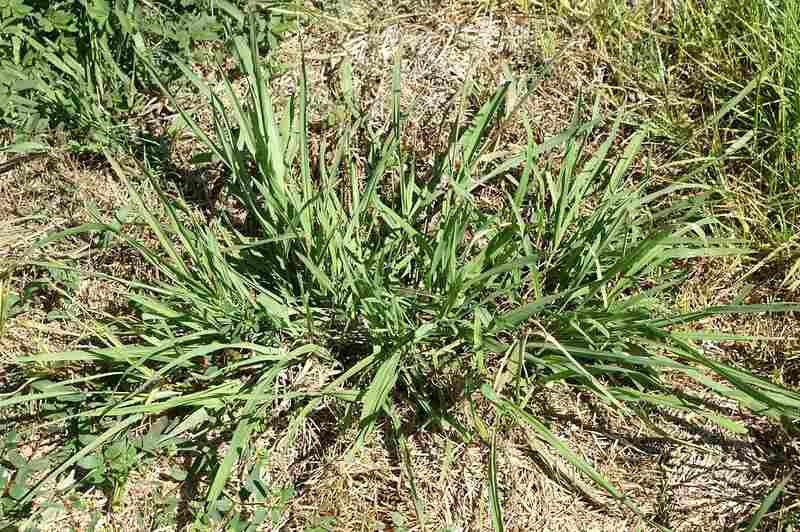
Photo Credit: Harry Rose / Wikimedia Commons / CC BY 2.0
Dallisgrass is a warm-season perennial grass that loves to invade Texas turfgrass, especially bermudagrass and St. Augustinegrass. It is aggressive and difficult to control thanks to multiple reproductive methods, including seeds, rhizomes, and stolons. Dallisgrass has a clumped, circular appearance with rough edges.
Proper lawn maintenance is the best line of defense against this aggressive grassy weed. It also responds well to hand pulling and pre-emergent herbicides in the spring.
Plant type: Perennial grass
USDA hardiness zone: 6-9
Habitat: Adaptable; prefers moist disturbed habitats like lawns, pastures, paths, and sidewalks
Danger: Moderate; non-toxic but susceptible to ergot fungus, which is toxic to livestock and horses
Removal method: Routine lawn maintenance, pre-emergent herbicide, hand removal
7. Dandelion (Taraxacum officinale)

Photo Credit: Pixabay
Dandelions seem like fun when you are a kid, but they turn into nightmares when you own your own lawn. These perennials behave like annuals and are a broadleaf weed. Dandelions pop up in the Dallas spring, beginning with their trademark bright yellow flowers before turning into light, puffy helicopter blade seeds that want nothing more than to be airborne.
Dandelions have a taproot that grows vertically downward between 6 to 18 inches deep. Unfortunately, removing the entire dandelion by hand is next to impossible, and the best removal method is a broadleaf herbicide.
Plant type: Broadleaf perennial
USDA hardiness zone: 3-10
Habitat: Adaptable; prefer disturbed habitats like lawns, pastures, paths, and sidewalks
Danger: Low; edible but may cause irritation in some people
Removal method: Post-emergent herbicide
8. Hairy Bittercress (Cardamine hirsuta)
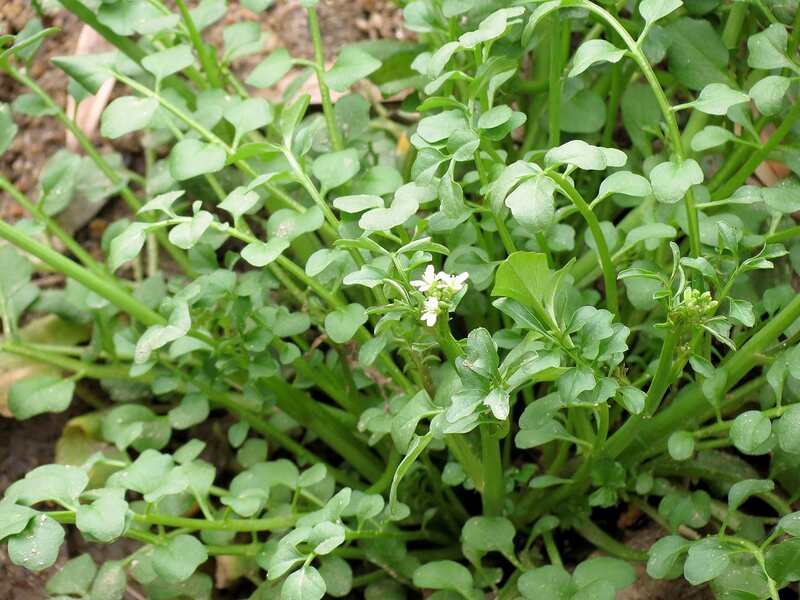
Photo Credit: Katja Schulz / Wikimedia Commons / CC BY 2.0
Hairy bittercress thrives in moist environments, popping up after early spring rains with blooms of tiny white flowers. The annual’s flowers turn into pods, dispersing seeds to propagate the plant. Post-emergent weed control is the best method to manage hairy bittercress before the seeds disperse.
Plant type: Broadleaf annual
USDA hardiness zone: 4-8
Habitat: Cultivated and open ground, rocks, and walls
Danger: Non-toxic; edible
Removal method: Post-emergent herbicide, hand removal
9. Henbit (Lamium amplexicaule)
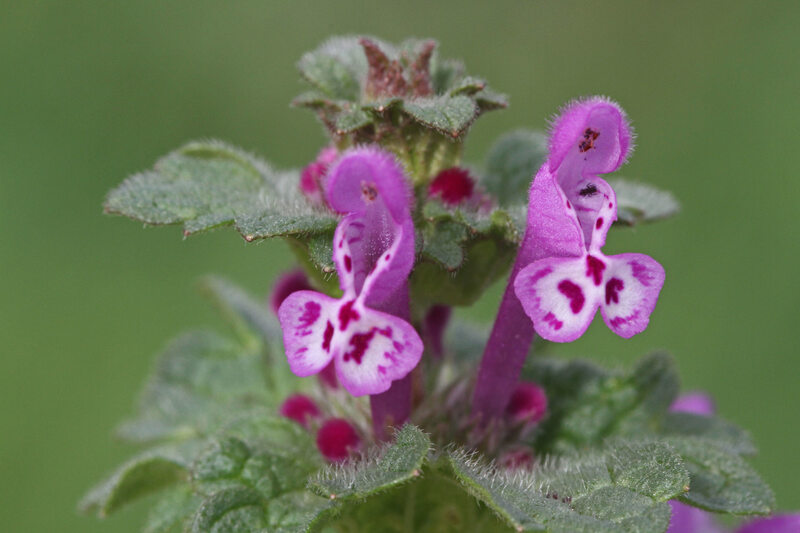
Photo Credit: Miltos Gikas / Flickr / CC BY 2.0
Henbit is a cool-season broadleaf annual with square branching stems. It is hairy with circular leaves and purple flowers. It spreads aggressively in the North Texas winters. Thankfully, it has shallow roots and responds well to hand pulling and pre-emergent and post-emergent herbicides.
Plant Type: Broadleaf annual
USDA hardiness zone: 3-8
Habitat: Adaptable; prefers disturbed lawns, pastures, gardens, nursery plots, and building edges
Danger: Non-toxic; no safety hazards
Removal method: Pre-emergent herbicide, post-emergent herbicide, hand removal
10. Purslane (Portulaca oleracea)

Photo Credit: Júlio Reis / Wikimedia Commons / CC BY-SA 2.5
Purslane is a low-growing succulent and broadleaf annual weed. It loves the rocky soil of North Texas, thriving in between cracks. It is adaptable and will easily encroach on turfgrass. Purslane is drought and heat-tolerant, surviving hot Dallas summers.
Purslane grows through spreading in a matted web. It has purple stems, alternating oval leaves, and yellow flowers. The best method to control purslane is hand pulling, ensuring you remove the whole root system.
Plant Type: Broadleaf annual
USDA hardiness zone: 5-10
Habitat: Adaptable
Danger: Non-toxic; edible
Removal method: Hand removal
11. Nutsedge (Cyperus rotundus)
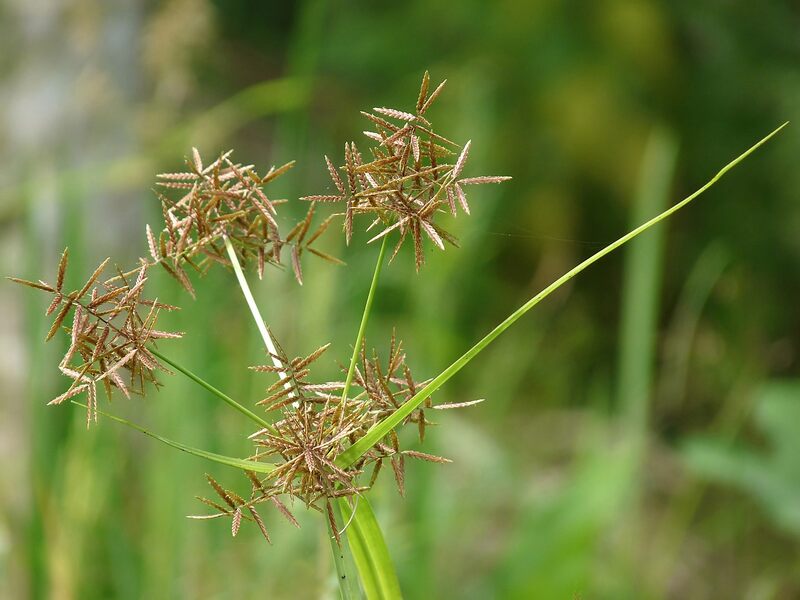
Photo Credit: Jeevan Jose, Kerala, India / Wikimedia Commons / CC BY-SA 4.0
Nutsedge, “the world’s worst weed,” is a perennial sedge weed with a triangular stem. It is drought-tolerant but prefers moist, undrained Texas soil. It grows faster than turfgrass and thrives in warm weather before going dormant in cool weather, only to pop up again when it warms back up.
Treat nutsedge with post-emergent herbicide and ensure your lawn is thick and healthy, being sure to fix drainage issues. Left unattended, the sedge perennial will thrive in bare spots, coming back year after year.
Plant Type: Sedge perennial
USDA hardiness zone: 4-9
Habitat: Moist, poorly drained soil
Danger: Non-toxic; no safety hazards
Removal method: Post-emergent herbicide
12. Quackgrass (Elymus repens)
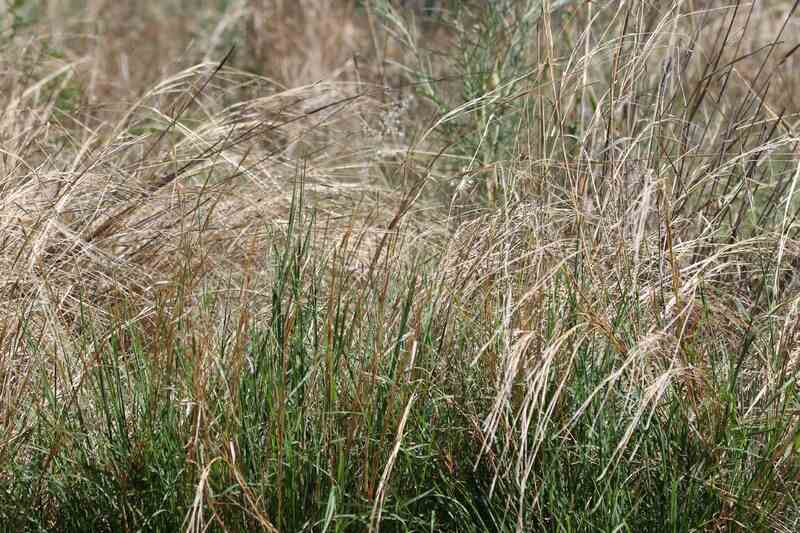
Photo Credit: Pxhere
Quackgrass sounds made up, but this perennial grass loves the Texas fall and winter seasons. It out-competes turfgrass and other weeds, spreading in large clumps with rhizomes. Quackgrass has coarse blades and resembles wheat.
Pull quackgrass by hand, being sure to remove the roots. The perennial grass also responds well to spot treatment using post-emergent herbicide.
Plant Type: Perennial grass
USDA hardiness zone: 3-10
Habitat: Moist areas
Danger: Noxious; quickly overtakes fields and crops
Removal method: Post-emergent herbicide, hand removal
13. Spotted Spurge (Trifolium repens)
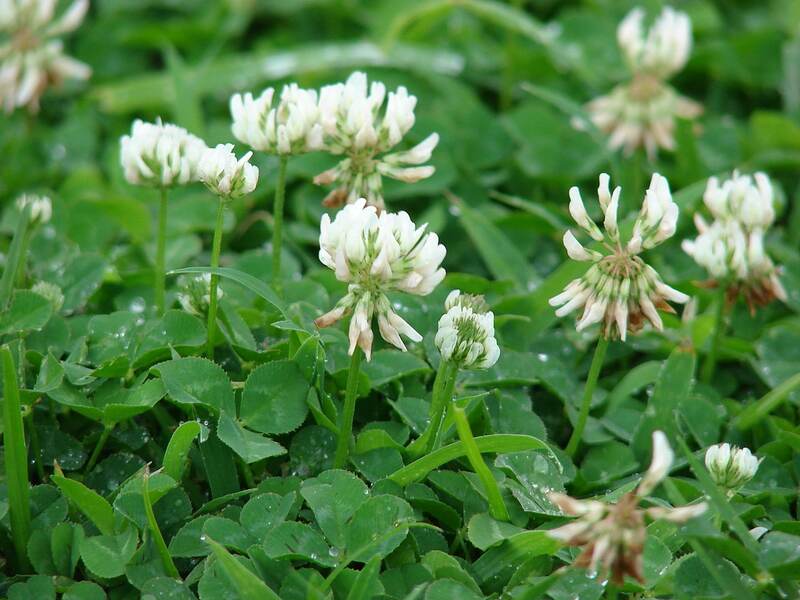
Photo Credit: Forest & Kim Starr / Wikimedia Commons / CC BY 3.0
Even though spotted spurge is a broadleaf annual, it is a nuisance. Like dandelions, this resilient weed has a long taproot which seemingly brings this zombie weed back from the dead. Spurge grows fast, and its tangled web of leaves spreads low. It loves dry, Texas soil and sun.
Pull spotted spurge by hand, but be sure to wear gloves. The zombie plant exudes a skin-irritating milky sap. This annual responds well to pre-emergent herbicide, or you can opt for a post-emergent herbicide if your spurge has already bloomed.
Plant Type: Broadleaf annual
USDA hardiness zone: 3-9
Habitat: Adaptable; prefer sunny, dry, disturbed habitats like lawns, pastures, paths, and sidewalks
Danger: Low; irritating milky sap
Removal method: Pre-emergent, post-emergent, hand removal
14. White Clover (Trifolium repens)
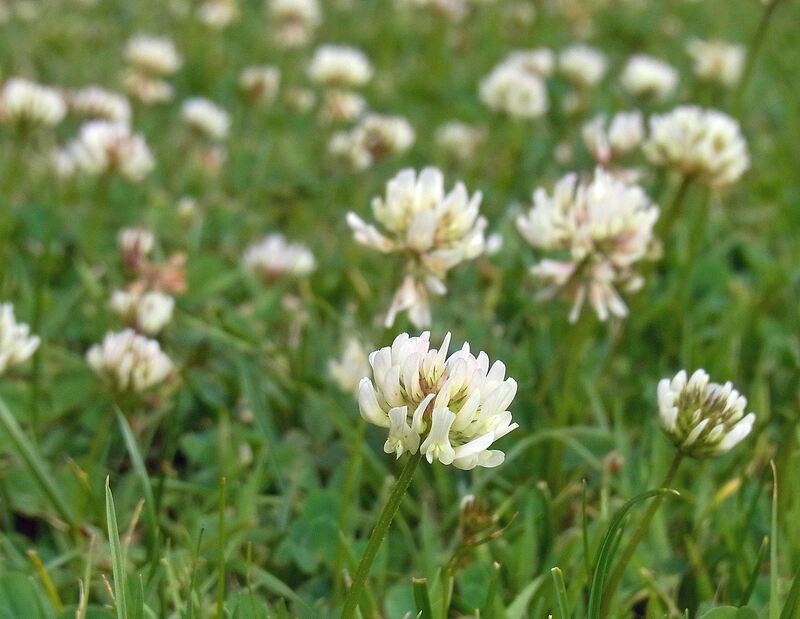
Photo Credit: Lawn Weeds / Wikimedia Commons / CC BY 2.0
White clover is another broadleaf perennial like dandelions that loves Dallas yards. It thrives in sparse turfgrass, blooming white flowers in the summer. Clover typically signals low nitrogen levels in your soil.
To remove the pesky good-luck charm, douse it with iron-based herbicides. You can also weed them by hand, taking care to remove their root systems.
Plant Type: Broadleaf perennial
USDA hardiness zone: 3-9
Habitat: Nitrogen-poor, grassy habitats
Danger: Toxic; damaged leaf tissues release cyanide
Removal method: Post-emergent, iron-based herbicide and hand removal
FAQ About Worst Dallas Lawn Weeds
What are selective herbicides?
Selective herbicides control specific weeds or weed families.
Non-selective herbicides are typically more potent than selective herbicides. They work on many weeds, including grassy and broadleaf. However, they also wipe out good vegetation and turfgrass. These heavy-duty herbicides are best left to the professionals.
Perennial weeds are the toughest to control thanks to their underground reproductive systems, including rhizomes and tubers. These weeds regrow season after season. Perennial weeds include clover, spotted spurge, dandelion, crabgrass, and chickweed. The best method to prevent perennial weeds from returning is hand weeding, ensuring you remove the entire root system.
Professional Weed Control for Your Dallas Landscape
Weeds are a nuisance, and no matter how diligent you are, they will pop up in your yard. The best defense against an invasion is a healthy lawn. There are many low-maintenance landscaping options available for Dallas, including weed-controlling mulch, and be sure to check out our list of the best native plants that will thrive in your Texas landscape.
If you need some help killing weeds before your next backyard barbecue, contact a Dallas lawn care pro today to keep your lawn healthy year-round.
Main Image Credit: Leonora (Ellie) Enking / Flickr / CC BY-SA 2.0